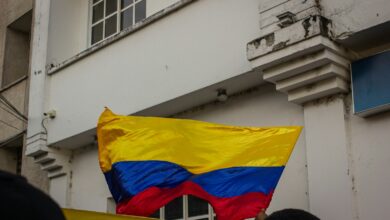Foreign Investments in Latin America Remain Stable Amid Global Decline

Foreign direct investments (FDI) in Latin America remained almost stable in 2023, totaling $193 billion, making it the least affected developing region amid a global investment decline, according to the UN Trade and Development annual report.
Foreign direct investments (FDI) in Latin America remained nearly stable last year, with a slight decrease of 1%, totaling $193 billion. This stability made Latin America the least affected developing region amid a global trend of declining investments, as the United Nations Conference on Trade and Development (UNCTAD) reported.
The UNCTAD report highlighted that several Latin American countries benefited from sustained demand for raw materials and minerals essential for producing clean energy technologies. While the region showed resilience, considerable differences were observed among individual countries. Mexico and Brazil remained the strongest magnets for foreign investments, with Chile emerging as an increasingly attractive destination.
Regional Investment Highlights
In South America, Argentina, Chile, and Guyana saw significant growth in FDI last year, balancing out more negative results in Peru and Brazil. Despite the latter’s decline, Brazil still received the highest investment flows in the region. Mexico maintained stable investment inflows, while the Dominican Republic stood out in the Caribbean with a 7% increase in foreign assets.
Rebeca Grynspan, head of UNCTAD, discussed international efforts to “decentralize” supply chains, a vulnerability exposed during the pandemic. She noted that some Latin American countries are not just benefiting from this shift, but also playing a crucial role in it. Mexico and Costa Rica in Latin America, Vietnam in Asia, and certain West African countries are enhancing their roles in a more decentralized global supply chain. This recognition of Latin America’s importance in the global supply chain should instill a sense of pride and confidence in the audience.
Despite a global slowdown last year, Grynspan also highlighted the region’s resilience in greenfield projects (new installations), particularly in renewable energy. She pointed to significant foreign investment announcements in large projects in Brazil and Chile, attributing this to Latin America’s considerable potential in renewable energies.
The Role of Renewable Energy
Latin America’s comparative advantage in renewable energy is a crucial driver of foreign investments. Grynspan emphasized that new technologies and sectors will increasingly require intensive use of renewable energy, and both Africa and Latin America hold a comparative advantage in this area.
Chile, in particular, has been a focal point for investments in green projects, including green hydrogen, solar, and wind energy production. Countries like China, the United States, Canada, and Australia primarily fund these initiatives. The report noted Chile’s efforts to harness its natural resources to become a global leader in the renewable energy sector.
Argentina, a shining example, has attracted significant FDI, particularly in its burgeoning tech sector and renewable energy projects. The country’s strategic initiatives to improve its investment climate and promote sustainable development have been instrumental in drawing foreign capital. Similarly, Guyana, a smaller but rapidly growing economy, has seen substantial investment inflows driven by its expanding oil and gas sector, contributing to its economic boom. These success stories are a testament to the region’s potential and should inspire confidence in its future.
Emerging Opportunities and Challenges
The stability in FDI flows to Latin America underscores the region’s attractiveness to foreign investors despite global economic uncertainties. The demand for essential minerals and raw materials, coupled with Latin America’s renewable energy potential, positions the region as a strategic investment destination. However, sustaining this momentum requires addressing underlying political instability, regulatory uncertainties, and infrastructural deficits.
Mexico, a top recipient of FDI, continues to leverage its strategic location and trade agreements, particularly the United States-Mexico-Canada Agreement (USMCA), to attract investments. The country’s manufacturing sector, especially in automotive and electronics, remains a significant draw for foreign capital. However, Mexico faces challenges, including security concerns and regulatory hurdles, that must be managed to maintain its investment attractiveness.
Despite a slight decline in FDI, Brazil remains a powerhouse in attracting foreign investments, thanks to its vast market size and abundant natural resources. The country’s recent policy shifts towards sustainability and renewable energy have made it a focal point for green investments. However, Brazil must navigate political uncertainties and economic reforms to sustain investor confidence.
The Caribbean, particularly the Dominican Republic, has shown resilience with increased FDI flows. The country’s tourism sector and its efforts to diversify the economy through manufacturing and services have bolstered its investment landscape. The Dominican Republic’s strategic initiatives, including enhancing its business environment and attracting foreign capital, are yielding positive results, positioning it as a critical investment destination in the Caribbean.
Future Prospects and Strategic Initiatives
The future of FDI in Latin America is not just promising, it’s exciting. Several countries are implementing strategic initiatives to attract and retain foreign investments. The region’s focus on renewable energy, technological advancements, and sustainable development aligns perfectly with global investment trends, making it an attractive destination for foreign capital. This potential for future growth should ignite a sense of excitement and anticipation in the audience.
Countries like Chile and Brazil are at the forefront of renewable energy investments, capitalizing on their natural resources and favorable policies. Argentina’s tech sector is emerging as a new investment frontier, driven by innovation and a supportive business environment. Guyana’s oil and gas sector attracts significant investments, contributing to its economic growth and development.
Regional cooperation and integration are crucial to maximizing the benefits of FDI. Latin American countries can enhance their investment attractiveness by fostering regional trade agreements, improving infrastructure, and ensuring regulatory stability. Collaboration with international organizations and foreign investors can drive sustainable economic growth and development across the region.
The UNCTAD report underscores the importance of a stable and conducive investment environment in attracting FDI. Latin American countries must continue implementing reforms and policies that enhance their competitiveness and appeal to foreign investors. By leveraging their strengths and addressing challenges, these countries can sustain and increase FDI flows, contributing to long-term economic growth and prosperity.
Also read: New Hopes for Latin American Immigrant Spouses Amid Policy Changes
In conclusion, while the global decline in FDI poses challenges, Latin America’s stability and resilience highlight its potential as a prime investment destination. The region’s focus on renewable energy, technological innovation, and sustainable development aligns with global investment trends, positioning it for future growth. Strategic initiatives, regional cooperation, and a conducive investment environment are crucial to attracting and retaining foreign investments, driving economic growth, and fostering sustainable development in Latin America.




